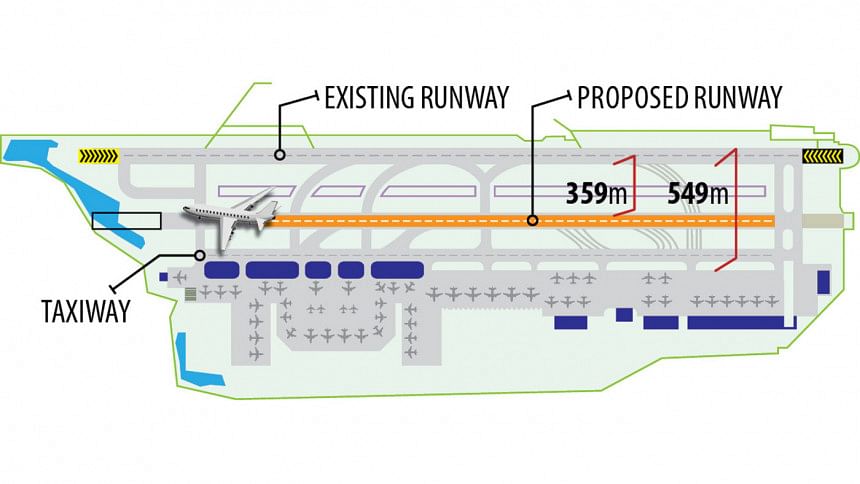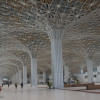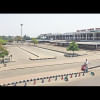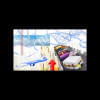Dhaka airport to finally get a second runway

The government has plans to build a second runway at Hazrat Shahjalal International Airport as air traffic is projected to increase after construction of the third terminal is done.
However, the runways will be very close to each other, due to space constraints, and two planes will not be able to land or take off simultaneously.
According to a top official of a foreign airlines, now planes often have to wait in queues on the taxiway for 30 to 40 minutes during take-offs. Landing also gets delayed sometimes because of air traffic at the HSIA.
"The long wait makes it hard for us to maintain flight schedules and it increases operational costs," says the official.
When the third terminal is opened, the frequency of flights will increase, and the situation will worsen. "This is why Dhaka airport needs a second independent runway."
Aviation experts say the growing air traffic and the number of passengers can best be handled if both the runways could be used simultaneously.
The Civil Aviation Authority of Bangladesh (CAAB) has done a feasibility study on the second runway and presented its findings to the civil aviation ministry in July.
Physical work on the second runway is likely to begin after construction of the third terminal is complete in May next year.
"Once the third terminal is in use, passenger handling capacity will significantly rise, new airlines will begin operating here, and many more people will use the airport every day," says CAAB Chairman Air Vice Marshal M Mafidur Rahman.
At least 12 foreign airlines have sought permission to operate flights to and from Dhaka.
Besides, Emirates and Kuwait Airways have sent applications to CAAB for increasing their number of flights.
As to why a simultaneously usable runway is not being considered, Mafidur says there is not enough room at the HSIA.
Runways should be at least 1,035 metres apart for planes to take off or land simultaneously using Instrument Landing System (ILS), according to rules set by the International Civil Aviation Authority.
CAAB Chief Engineer Abdul Malek said the ILS – that help guide planes land on a runway – cannot be used on both runways simultaneously as they may interfere with each other. But a visual approach can be done.
Mafidur said the planned new runway's advantage is when one plane lands, another will be able to prepare for take off without delay.
Besides, if one runway is closed due to an emergency, the other will be available, explains the CAAB chairman.
The CAAB is also working to make optimum utilisation of the resources to handle the additional number of planes and passengers.
"When Dubai airport started operation, it handled 50 million flyers a year with a single runway. It was possible through efficient management. We handle only 8 million. If we can develop infrastructure and management, we will be able to serve many more passengers with the current runway.
"We have built two high-speed taxiways. We are setting up a highly sophisticated air traffic management system so that planes can go to the apron very quickly after landing and reduce the time the next plane has to wait to use the runway," says the CAAB chief, adding that the number of boarding bridges will also be increased.
With the third terminal, the annual passenger handling capacity of the HSIA will reach 20 million.
Currently, 33 airlines operate 150 flights from the airport each day.
Aviation expert ATM Nazrul Islam says, "The airport should have had space for two independent runways. Not leaving the space was a big mistake."
NEW RUNWAY
Currently, the taxiway and the runway are separated by about 549 metres. The new runway will be between the runway and the taxiway. The two runways will be separated by about 359 metres, according to documents obtained by this paper.
The existing runway will also be extended to 3,692 metres – 400 metres to the south and 92 metres to the north.
The 2nd runway will be 3,292 metres long.

 For all latest news, follow The Daily Star's Google News channel.
For all latest news, follow The Daily Star's Google News channel. 









Comments